design paint brush to make different marks
How to Choose the Right Paint Brush
It's so easy to become overwhelmed at the sheer number of options available for paint brushes. Just walking down the paint brush aisle at the art store can be a bit intimidating. These days, many manufacturers have started labeling the sections of the display to make it a little easier to choose. But with so many choices, how do you know that you are purchasing the right brush, for the right application, to use with the right media?
Hopefully, we can clear a few things up here. You'll find that, like with many things associated with art, it's not an exact science.
Paint brushes differ according to several characteristics. These include...
- Hair or bristle type
- Shape of the bristles
- Width or thickness of the bristles
- Length of the handle
We'll discuss each of the these factors further in a moment. But if you are a visual learner, you may be able to pick up on a few of the key facts from the infographic below...
(Click on the image to enlarge)
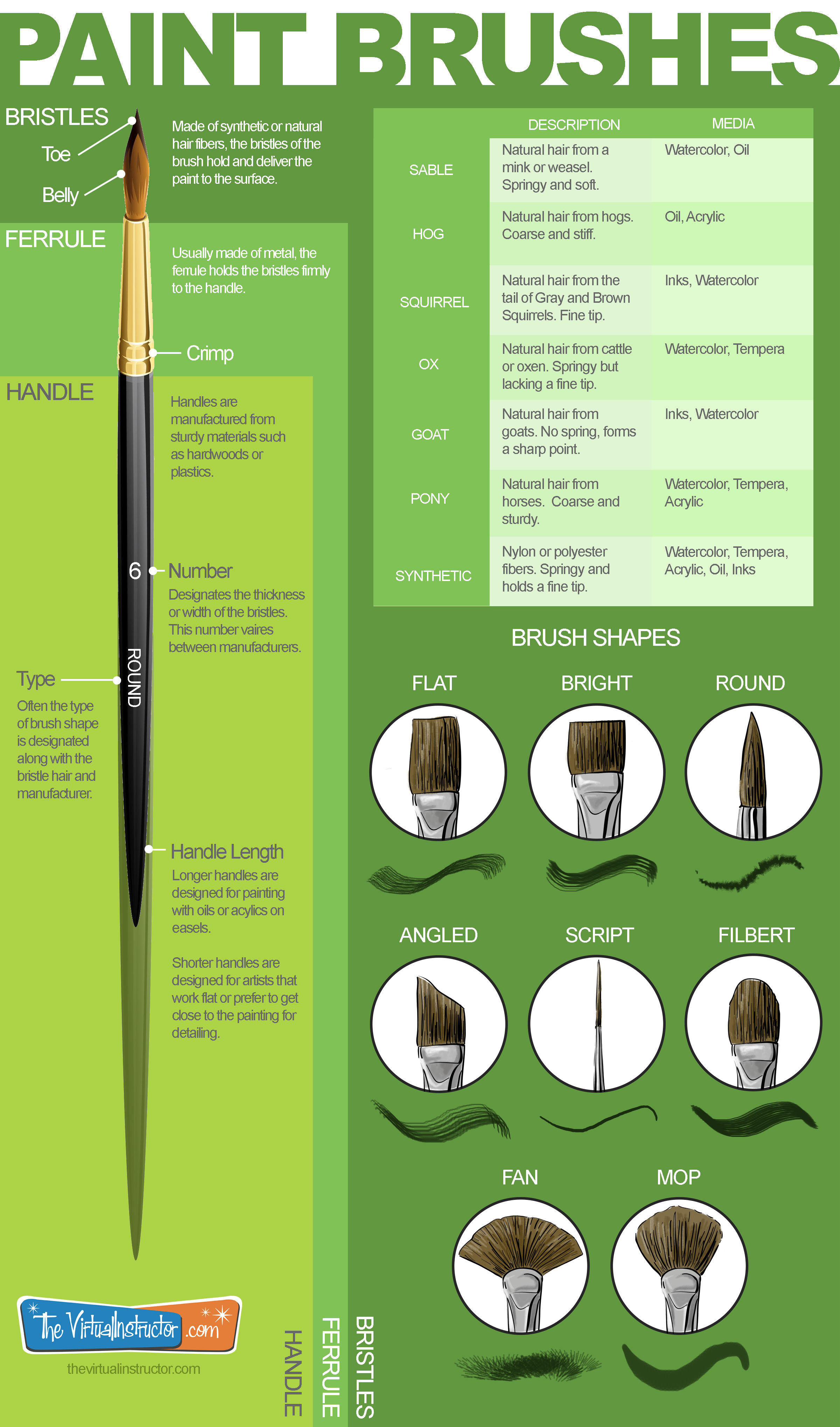
Paint Brush Hairs/Bristles
Perhaps the most important factor in choosing the right paint brush for your application is the hair type found in the bristles of the brush. Choosing the wrong bristle type could produce undesirable results and make the process of painting frustrating.

Let's take a closer look at some of the available bristle hairs...
Sable - Named for the animal from the mink family, the Sable Marten, sable brushes are soft and springy. Mostly used with watercolor and oil painting, sable brushes are capable of holding a sharp point for controlled painting. Although its name suggests that the hair fibers are taken from an animal called a "sable", the hairs commonly originate from a weasel or mink.

Hog - Taken from the hairs of a hog, hog bristles are coarse and tough. These inexpensive brushes are used for thicker paint consistencies such as oils or acrylics. Capable of holding a large quantity of paint, brush strokes are clearly defined when this type of brush is used.

Squirrel - An alternative to sable, squirrel brushes are soft but lack spring making them a bit harder to control. Despite a lack of spring, squirrel brushes are capable of producing a fine tip. As their name suggests, squirrel hairs are taken from the tails of Gray and Brown Squirrels. Squirrel brushes are best for use with thin paints such as watercolors or inks.

Ox - Taken from cattle or oxen, ox hair brushes are springy, but lack a fine tip. These brushes can be used with a variety of painting media.

Goat - Mostly used for watercolor painting, goat hair brushes lack spring but are capable of producing nice washes of color.

Pony - Natural hair from mature horses (not ponies) is used in these brushes. Fibers are coarse and tough. These brushes are mostly used for water-based paints such as watercolor, tempera, and acrylics.

Synthetic - Made from nylon or polyester fibers, synthetic brushes offer the most versatility. Synthetic brushes can be used with virtually any type of painting medium. If you are not sure what type of brush to purchase, synthetic brushes may be the best way to go.
Paint Brush Shapes
Paint brushes feature different bristle shapes which influence the marks that are made. All brush shapes can be used with any medium. It is the hair type that should be closely considered when choosing a brush for a specific medium. Let's take a closer look at each of the bristle shapes...
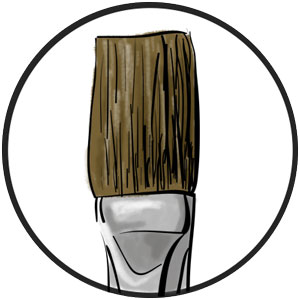
Flat
Flat bristles are long and rectangular. They feature a flat "toe" and are capable of producing flat strokes. They can also be used to create defined edges and controlled lines.
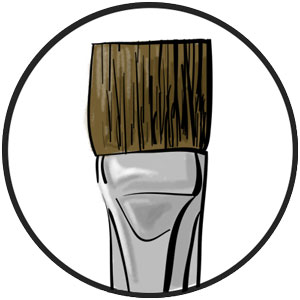
Bright
Bright bristles, like flat brushes, feature a flat "toe". The difference lies in the length of the bristles. Bright brushes are shorter and form a shape similar to a square instead of a rectangle.
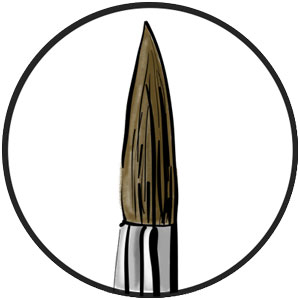
Round
The most versatile brush type is the round brush. Featuring a round "toe", a round brush is able to produce detailed, controlled marks as well as thicker ones.
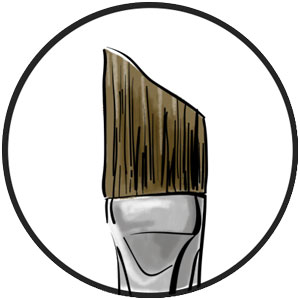
Angled
Angled brushes feature an angled "toe" which can be used to produce marks that are flat or varied. For some, the angled tip makes it more comfortable to paint flat lines.
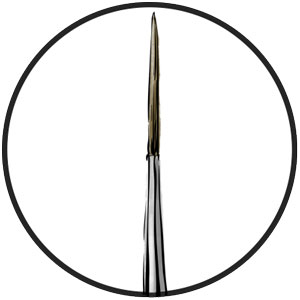
Script/Rigger/Liner
A brush by many names, the script brush is long and skinny producing controlled lines. Despite its skinny shape, it is capable of holding quite a bit of paint.
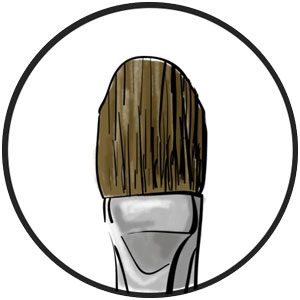
Filbert
Filbert brushes feature a curved "toe". Capable of holding a good amount of paint and producing a wide variety marks, filbert brushes are widely used by oil and acrylic painters.
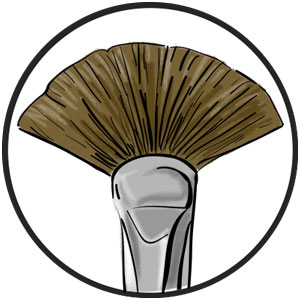
Fan
Mostly used for textural effects, the fan brush features a wide "toe". Mostly, it is used to gently "dab" the surface, rather than pulling out a stroke.
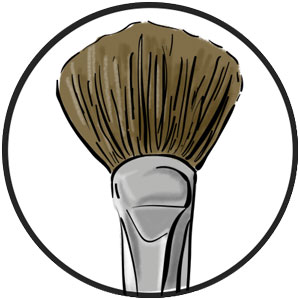
Mop
Mostly used in watercolor painting, mop brushes are great for spreading even washes of color over large areas.
What Does The Number On A Brush Mean?
Now this one is fairly tricky. The number on the side of the paint brush refers to the thickness, length, or width of the bristles. Confusion arises because this number varies between manufacturers. A brush labeled with a "6" may look completely different than a "6" brush by a different manufacturer.
Long Handled Brushes vs. Short Handled Brushes
Long handled brushes are typically for paintings that are created on an easel. Longer handles allow the artist to hold the brush further down towards the bottom of the handle.
Shorter brushes are most often used on smaller paintings, for detail work, or for paintings that are created on a flat surface. Shorter handles allow the artist to get close to the painting without the handle getting in the way.
Summing It All Up
In the end, the right paint brush is the one that the artist is most comfortable with. Short handled, long handled, filbert or flat - it's the marks and the end result that really matters. It may take some time and some experimentation to find what's right for you and your application, but hopefully this little guide will help you make an informed decision.
More Lessons You'll Love...
design paint brush to make different marks
Source: https://thevirtualinstructor.com/choose-the-right-paintbrush.html